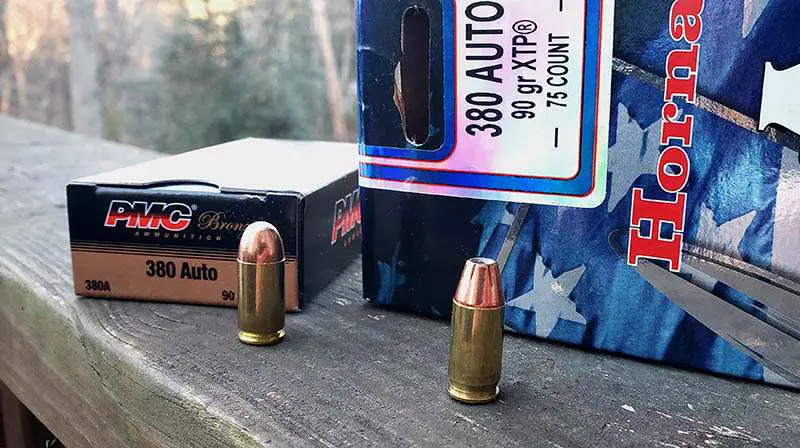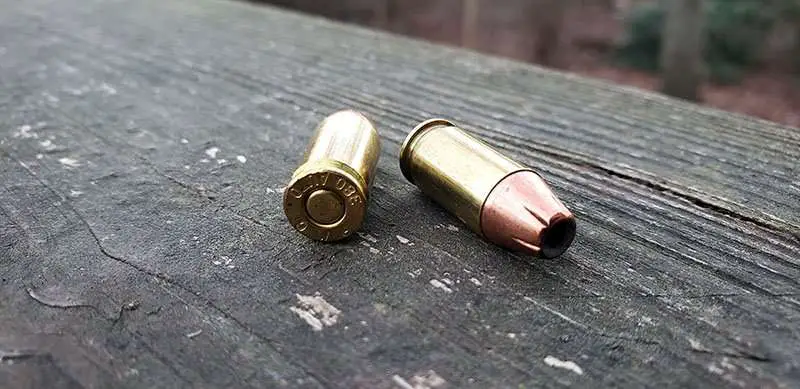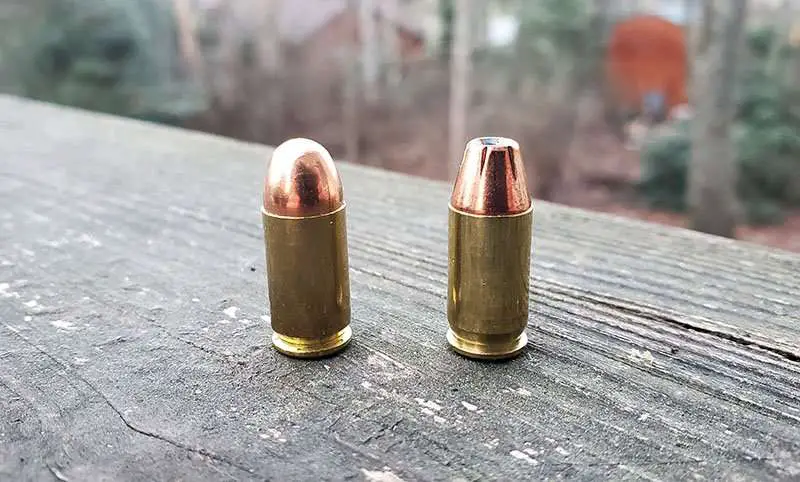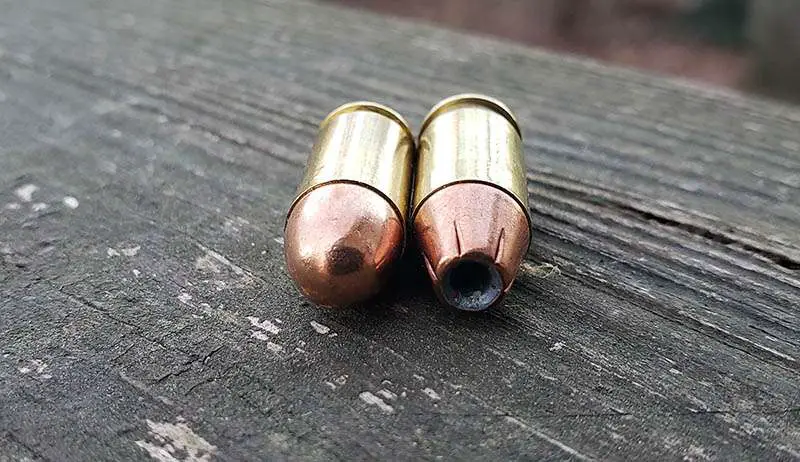
380 Auto
A complete history with facts, uses, pros, cons, and ballistic information.

380 ACP, What’s in a name?
The 380 ACP is a popular handgun cartridge that was brought to market in 1912 and is still growing in popularity. The handgun cartridge is also known as 380 Auto, 380 Automatic, 380 Automatic Colt Pistol, 9mm Short, and 9mm Kurz.
.380 ACP History
The 380 ACP was invented by the genius mind of John Moses Browning, originally for the pocket pistols of the time. The cartridge was brought to market by Browning in 1912.
380 Auto Projectile
The projectiles for the 380 Auto range in weight from 80 grains up to about 100 grains, with 90 grain bullets being the most popular. This ACP round comes in a few different forms, to include target ammo, hollow points for self-defense, and frangible.
380 ACP VS 9mm Luger
The 9mm Luger is superior in most ways to the 380 ACP, but that does not mean that there is no use for the Automatic. The 380 will in most cases recoil lighter than the 9mm when the dimensions of the guns are the same, and while the 9mm pistols seem to be getting smaller, the 380 guns seem to be getting bigger in order to appeal to a different audience.


380 ACP Performance
The 380 ACP is sufficient as a handgun self-defense round in many cases. This is often thought to be the lowest-power cartridge you’d want to use, however cartridge selection is of utmost importance. Using a proven self-defense round that expands well and penetrates far enough to cause internal damage can be difficult. More on this later.
380 Automatic Ballistics Chart:
This ballistics test was conducted with a handgun barrel length of 4 inches using Hornady 90 grain XTP with a ballistic coefficient of .099.
| Muzzle | 25 Yds | 50 Yds | 100 Yds | |
| Velocity (FPS) | 1,000 | 953 | 913 | 846 |
| Energy (FT/LB) | 200 | 181 | 167 | 143 |
| Drop (Inch) | / | 0“ | -1.6″ | -12.8″ |
380 Automatic Recoil
Trying to tell someone how hard a firearm recoils is quite hard to do. However, what we can do is say that when all things are equal, the 9mm will recoil slightly more into the shooter’s hands than the 380 will. Again, this is when all things are equal, like the size of gun’s grip, the overall weight of the pistol, etc. This is important to note because a smaller 380 ACP chambered pistol will feel as though it recoils harder than a bigger 9mm does.
380 ACP Cost
Right now as of this writing, we’re in a massive ammunition shortage that is only going to get worse. However, when compared to other industry standard self-defense rounds, the 380 can cost more, especially depending on where you live. Right now with the ammo shortage, 380 ACP can run you between .80 cents per round and $2.00 per round, depending on your quantity and type of ammo you’re getting.
Applications for the 380 Automatic

The 380 Automatic’s platforms have changed a bit since first released in 1912. While guns with bigger, more powerful cartridges get smaller, the 380 guns have gotten bigger and more controllable, recoil wise, for weaker handed shooters in self-defense situations.

Many of the guns chambered in 380 ACP are sufficient enough for concealed carry, and even home defense scenarios under the right situations. Many 380 guns are small, but they do come in various different sizes across the spectrum. 380 is a decent self-defense round.
380 ACP FAQ:
Here are short and to the point facts for your consideration.
Below this section you can read the entire article.
How effective is 380 at stopping an attack?
The effectivness of the 380 ACP will depend largely upon a few different factors. The first one, and notably most important, is the type of bullet you’re going to use. You need to use a bullet that will not only feed properly in your potentially picky gun, but also one that penetrates and expands enough to cause enough internal damage to prevent an attack from continuing. We’ll talk more about bullet selection below.

Who is the 380 good for?
Recent iterations of 380 pistols seem to be getting bigger, though there are plenty of pocket sized pistols still available. Still, with the 9mm self-defense handguns getting smaller, I like to tell people that the bigger 380 guns are great for people who have a harder time shooting more powerful guns due to recoil or problems with manipulation. For example, the 380 requires a less-stiff recoil spring and is therefore easier for someone to rack the slide to chamber a round.

Why is the 380 ACP so popular?
As with all things, anything that receives a huge amount of support in our industry is going to stay popular over time. This is why the .45 GAP never took off, and why the 380 ACP has been going strong for so many years. All of the major gun manufacturers build pistols for the 380 to include Glock, SIG, Ruger, S&W, and plenty of others.

380 ACP hollow points or ball ammo?
There is a lot of talk on the effectiveness of the ammo you can find for the 380 ACP chambered pistol with some suggesting that the ball ammo, the one on the left above, should be used because hollow points don’t expand enough to do enough damage and also don’t penetrate enough. This thinking is highly flawed and there are hollow points out there that work how they’re supposed to. We will cover this more in the article below.

Why is it sometimes called 9mm short?
Sometimes the 380 ACP is called the 9mm short because it’s technically a shorter version of the 9mm Luger with a lighter weight bullet (also loaded to different specs). Standard weight for 9mm are 115, 124, and 147 whereas the 380 standards are 85 and 90 grains. 9mm and 380 are not interchangeable, meaning that you cannot take one and shoot it in a gun chambered in the other.

What are some good pistols for the 380 ACP?
There are a lot of different brands and models of handgun chambered in the 380 ACP. One thing to keep in mind is not all of these pistols will reliably cycle all of the popular ammunition types out there. When you decide on a gun, make sure you break the gun in for a couple hundred rounds to make sure it’ll work with your EDC ammo. Some of the better pistols are the S&W EZ, the Glock 42, the SIG P238, and the SCCY CPX-3 ( I have one of these I’m working on a review on right now).


Why 380, and why now?
While there is a good reason as to why my family owns a couple of pistols chambered in 380 I’m going to be completely honest with you and say that the 380 is not my first choice for self-defense.
I’ll get to the reasons why it’s not my first choice in the next subsection of this article, but for now let’s focus on why it’s good for certain people.
First off, more effective self-defense calibers are more likely to be put into smaller guns that rival the size of the guns the 380 was famous for shooting, until just a few years ago. Reason being, technology has come a long way.
It used to be that the 380 was chosen for deep concealment, pocket carry, or just to have an ultra concealable gun.
Well, the 9mm and even bigger caliber guns are getting smaller and smaller. And because 380 ACP ballistics are inferior to 9mm, this has caused a major shift in the way of thinking in at least some of the gun manufacturers.
With the advent of guns like SIG’s P365 and Springfield’s Hellcat, there is almost no reason for people to buy guns in 380. At least, there wasn’t until that shift occurred.
While the 9mm guns have been getting smaller and smaller, the 380 ACP guns have been getting bigger and are easier than ever to manipulate and shoot.
This is very important if you have arthritis, have weaker hands, or are recoil sensitive.
Because 380 is a lighter cartridge it requires a less-stiff recoil spring. Because of that, a bigger gun that you can get a full grip on chambered in a smaller, yet still good-enough self-defense round, will help aid you in racking the slide.
Also, because the cartridge is lighter and the frame of the gun is bigger recoil is much more manageable. This means that you can deliver follow up shots quicker and with greater accuracy.
In fact, my wife has arthritis really bad and can only use one of these guns for her own personal defense, which is why we have the SCCY CPX-3 chambered in 380.
I also wanted to say that none of this is to discount the smaller 380 guns at all. I own one and while I don’t shoot it because it’s unreliable with most ammo, I saw its purpose when I bought it.

The effectiveness of the 380 Auto, and is it enough?
Is 380 good enough to stop an attack? Well, yes. But, it wouldn’t be my first pick.
Let me explain: Any caliber of any cartridge will be sufficient if under the right circumstances. For example, if I have a 380 on me and I must defend myself and/or family, the 380 cartridges in the gun I’ve got on me will be the most effective attack stopper I have.
Is the little 380, which some would consider a mouse caliber, the best choice on the market? Of course not. At the end of the day the 380 is, at best, a mediocre and underpowered 35 caliber cartridge.
But it is still a 35 caliber cartridge, which, in terms of being poked by flesh penetrating devices, is nothing to sneeze at.
It’s not the best for self-defense, but keeping that in mind it is also far from the worst. Instead, the 380 ACP tends to fall into the category of “good enough” which also just happens to be the spot where most handgun calibers fall.
Because it shoots a 35 caliber bullet, albeit at lower velocity and energy than some of its 35 cal brethren like the 9mm and 357 mag, it is good enough for most situations.
But, bullet selection is of utmost importance and if you’ve kept with me until now this is the reason why you’ve stayed this long.
Penetration VS Expansion:
At least part of the problem many consider when not choosing the 380 for carry purposes is that the 380 ACP is inconsistent as a performer. This is mostly true for a few different reasons.
The first reason is because the 380 lacks the power to penetrate deep enough to cause substantial internal wounding (unless you are using ball ammo, which I don’t recommend unless you’re in a jam).
The second reasons is because it doesn’t expand enough, also due to a lack of power.
The keyword there, however, is “mostly” because there are a few ammunition manufacturers who have nailed both penetration and expansion.
For example, Hornady Critical Defense is one of the top performers and consistently gets to the minimum FBI penetration of 12 inches, while reaching an average of .5″ of expansion. Another decent performer is the SIG V-Crown which gets the .5″ of expansion, but penetrates between 11 and 15 inches (just shy of what is the FBI Standard 12-18).
Again, consistency is key. I say that because another aspect about this is that if you shoot 5 rounds of 380 into a block of gel and only 3 rounds perform the way they should, it can cause some problems if you have to defend yourself.
Another cartridge worth watching is the Federal Premium Hydrashok Deep in 380, but I haven’t been able to get my hands on any since Ammopocalypse 2020 happened. Either way, you can watch my video on it at SHOT Show 2020, here:
Test your 380 ammo before you carry it
No matter what you decide to carry in your gun, make sure that you test it before you actually carry it. A lot of folks assume that because their gun cycles some ammo just fine that it will also cycle their hollow point ammunition as well.
That’s not always the case as a few people have undoubtedly found out the hard way. In fact I had a friend once who used to carry a small pocket pistol with some hollow points that didn’t work after the first shot and would have a failure to load.
This usually happens because of one of a few different reasons, that I won’t get into here. Suffice it to say that the bullet profile on a hollow point is different between one to the next and they don’t always feed properly.
Always shoot your defensive ammo through your carry gun to make sure it works properly. Always.
The smaller 380 guns are notorious for jamming with specific types of ammunition.
This is the end of this 380 auto ballistics info. We compare the 380 Auto to 9mm Luger, in that article.


